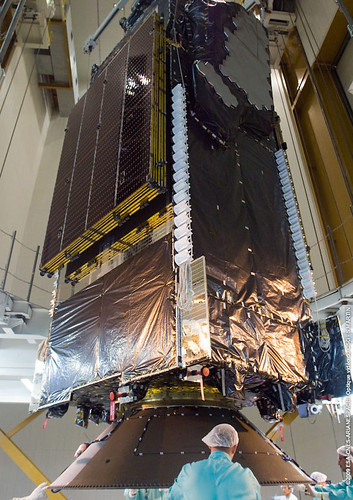Welcome Back Horowitz
Thursday, July 16th, 2009While I was away earlier this month, Andy Pasztor wrote a piece in the WSJ on former SES AMERICOM CEO Ed Horowitz teaming up with former International Launch Services CEO Mark Albrecht to form U.S. Space:
A clutch of former Pentagon brass is helping to start a company that offers a new service: satellites intended solely for military communications that would be built, launched and owned by private investors.
The new company, called U.S. Space LLC, attempts to meet a need that the U.S. military has struggled to fill. As U.S. forces deploy to out-of-the-way regions, the Pentagon frequently needs more satellite capacity for communications and distribution of video surveillance than it can get its hands on.
The military’s own satellites are expensive, and often take too long to deploy to satisfy fast-changing battlefield needs. Meanwhile, the military hasn’t always been able to lease sufficient bandwith on traditional commercial satellites, particularly in remote areas such as Afghanistan.
The new company intends to build and launch relatively small and inexpensive commercial satellites that would be optimized for military use and leased only to military customers, according to Mark Albrecht, the company’s chairman and co-founder.
Backers said the price of the satellites would be held down by keeping them small, modular and relatively basic, without tailoring them for special needs and piling on bells and whistles.
"This is absolutely responsive" to the Pentagon’s needs for quickly supplementing current capacity wherever it’s needed, said Mr. Albrecht, a former head of Lockheed Martin Corp.’s international rocket business.
The company’s board members count three former Air Force generals, including retired Lt. Gen. Michael Hamel, who until recently served as the military’s top uniformed space-acquisition official; retired Major General James Armor, a former space policy maker; retired Major General Craig Weston, who is also the president and chief executive of U.S. Space. The company’s backers include firms headed by former Attorney General John Ashcroft and former Defense Secretary William Cohen.
Each proposed high-altitude satellite is envisioned to cost less than half of the roughly $350 million price tag for building and launching a large, top-of-the-line commercial satellite. The Pentagon and various national-security customers already lease significant commercial capacity, often at expensive spot rates that by some estimates amount to more than $800 million annually.
In addition to being less costly, the venture aims to be more flexible because the in-orbit locations and transmission frequencies specifically will be intended for military uses.
The U.S. Space models are intended to be ready for service in roughly three years, versus a decade or more in development for most Pentagon satellites.
The project is risky, partly because no firm financing or contracts to supply capacity have been signed. The Pentagon is notorious for balking at long-term satellite leasing arrangements.
But military brass "have really endorsed" the commercial approach and "encouraged us to continue the discussions," said Edward Horowitz, a U.S. Space co-founder and former president of the U.S. unit of global satellite-services giant SES Global.
Industrial firms backing the venture include a group of second-tier aerospace contractors led by Orbital Sciences Corp., which is in line to build the satellites and launch them with a beefed-up version of its Minotaur rockets.
Ed was the inspiration and force behind this blog, and Mark was at helm of ILS when they began publishing their launch blogs. They will surely impact the commercial space business.









